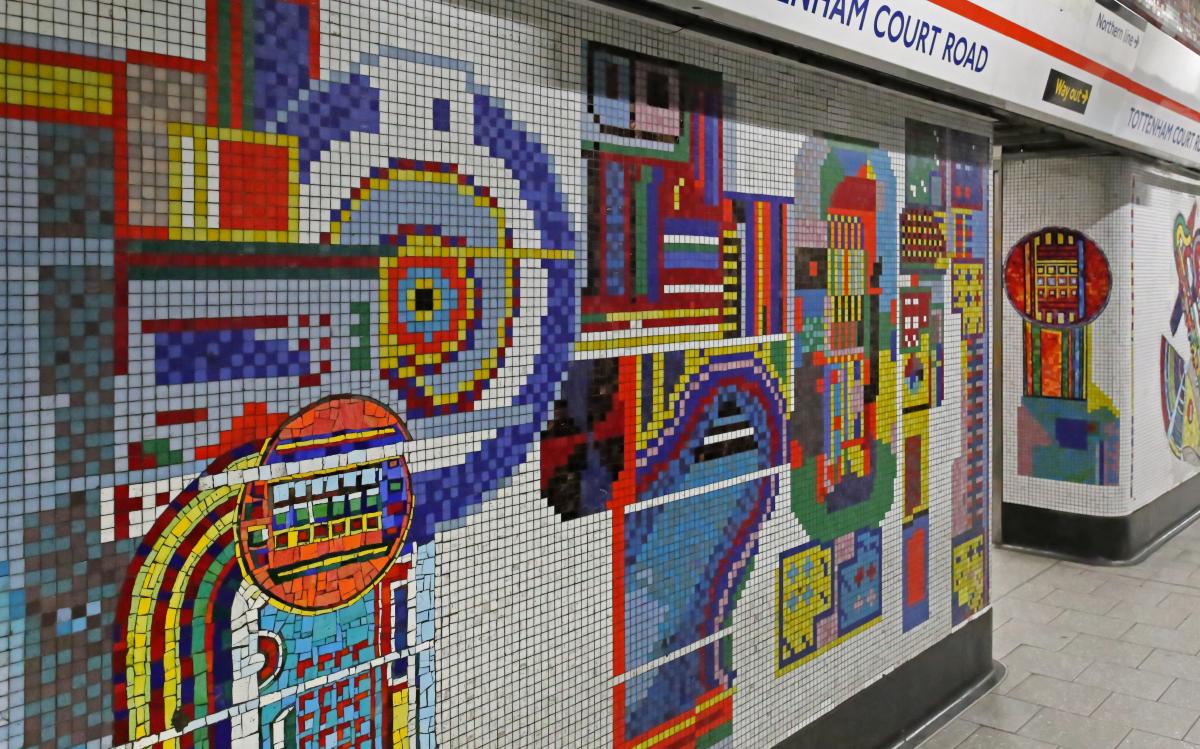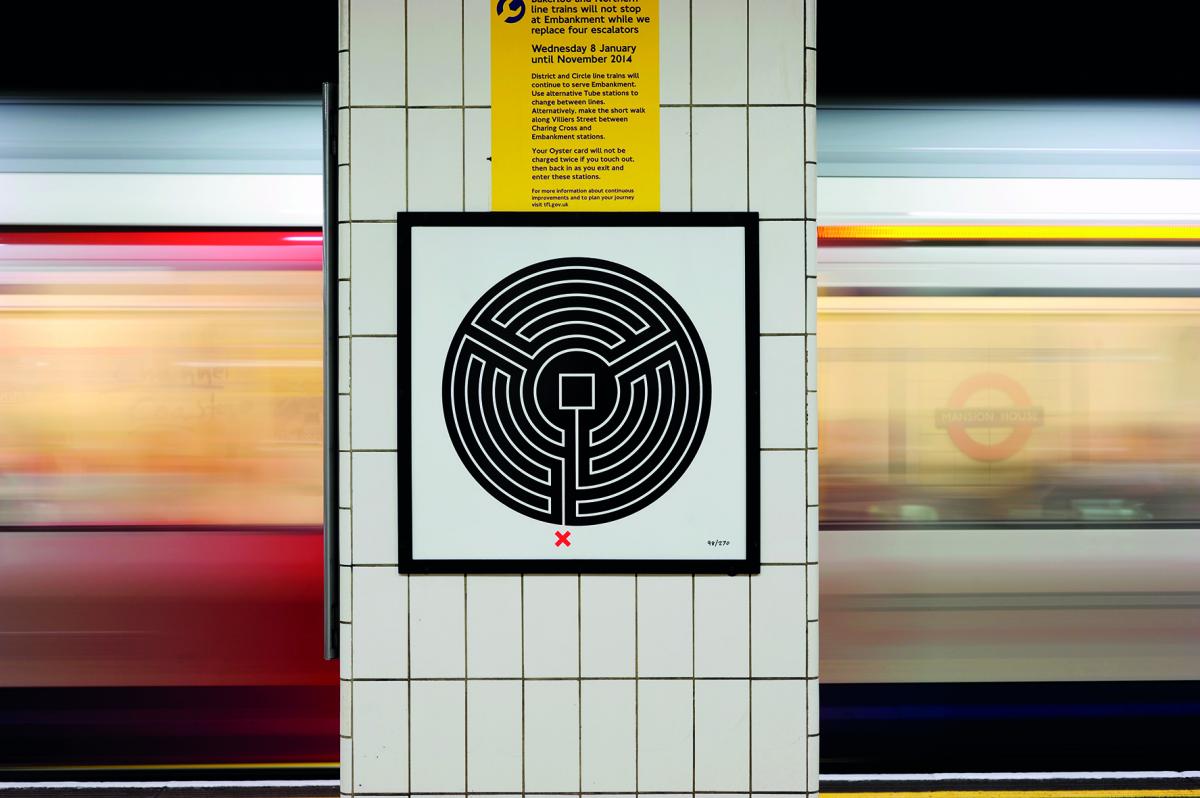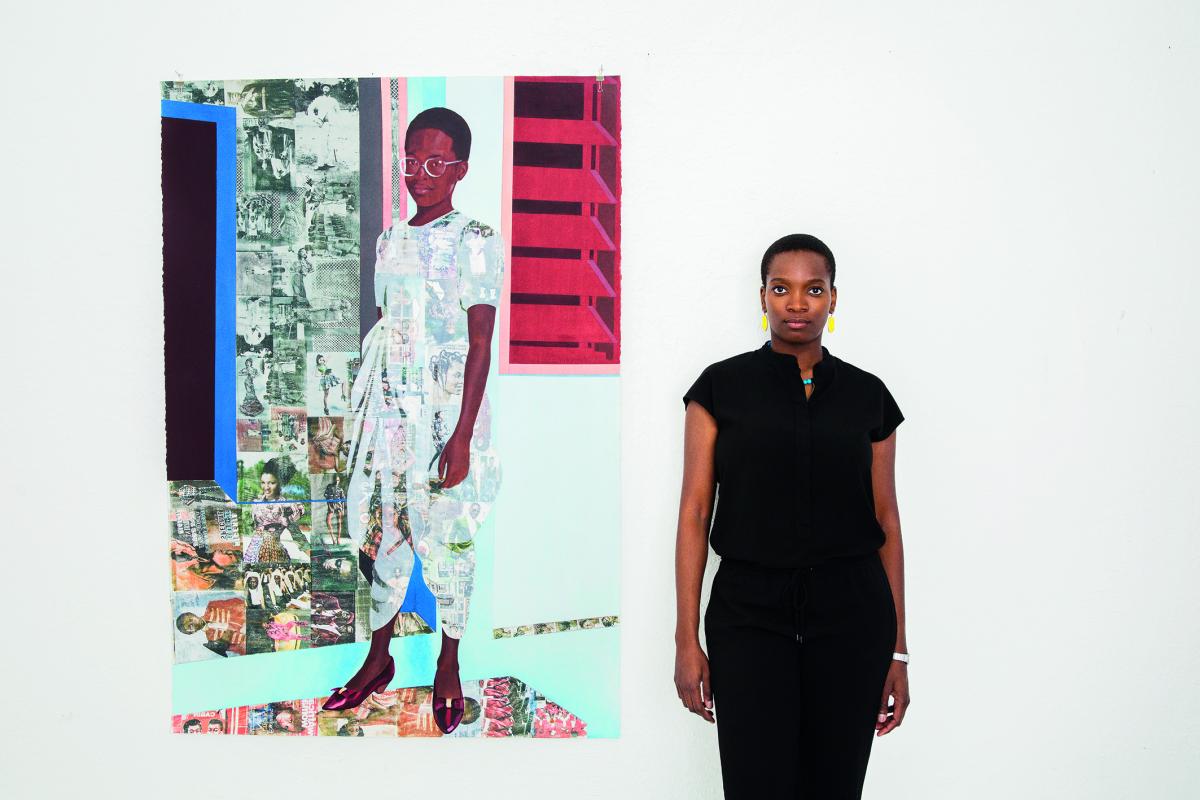This wonderful Cornish workshop and museum is dedicated to the legacy of studio pottery trailblazer Bernard Leach
Artistic platforms: Art on the Underground 2018
Artistic platforms: Art on the Underground 2018
21 Sep 2018
Art on the Underground has commissioned work from some of the top current artists – but art on the Tube is not new. Holly Black reveals how it has featured from the start, and why this is the year for female artists.
A BRIEF HISTORY: ART ON THE UNDERGROUND
The London Underground has a long history of artistic innovation. In 1908, the red and blue roundel, originally known as the ‘bar and circle’, appeared on stations and maps. Then, in 1913, the artist-craftsman Edward Johnston was invited to design a new typeface (Johnston’s Standard Block Lettering) that would unify signage throughout the network.
The notion was the master stroke of Frank Pick, then Publicity Manager, later Managing Director. Under his guidance, the transport network introduced such initiatives as Harry Beck’s revolutionary circuit-style map; Art Deco stations designed by Charles Holden; and avant-garde posters produced by artists such as Man Ray.
It is no wonder Nikolaus Pevsner referred to Pick as ‘the ideal patron of our age’. His long-standing influence lives on in the longevity of many of his commissions. He also instilled a fundamental connection with the visual arts that continues to this day. One only has to recall the outrage over the plan to eradicate Eduardo Paolozzi’s mosaics at Tottenham Court Road station, to understand that people have come to associate the network with important public art.

Eduardo Paolozzi at Tottenham Court Road. Image courtesy TFL
A platform for art
However, the Underground’s work goes well beyond simply preserving 20th-century heritage. In 2000, the Platform for Art initiative was launched, centred on an 80-metre disused platform at Gloucester Road station. The inaugural installation featured Kendra Haste’s exotic animals sculpted from wire. As the remit expanded to further sites, there was a renewed focus on commissioning art that directly engaged with the environment.
‘We had reached serious art critical levels,’ says Eleanor Pinfield, Head of Art on the Underground. ‘We had an exhibition of the American photographer Cindy Sherman’s portraits, for example, and the [Gloucester Road] platform became known for showing cutting-edge contemporary art.’
The programme now has myriad forms, from architectural interventions to limited-edition posters and maps. Though most commissions are temporary (to avoid issues with conservation, as much as red tape), a few long-term examples do exist. Mark Wallinger’s variants of a map-cum-maze motif have been installed in every station, while Daniel Buren’s intervention throughout the renewed entrances of Tottenham Court Road are a contemporary homage to the mosaics below. In 2016, Frank Pick himself was immortalised with a roundel inscribed with his name at Piccadilly station, thanks to artist duo Langlands & Bell.

Mark Wallinger, Labyrinth, 2013. Image Thierry Bal, 2013. Commissioned by Art on the Underground
Though Art on the Underground now operates across the city, Gloucester Road is still an important location for major installations.
The most ambitious to date is Heather Phillipson’s my name is lettie eggsyrub (2018), a bizarre cacophony of enormous sculptures and cutouts that convey various unfortunate fates bestowed upon chicken eggs. The artist was directly informed by ‘the specific architecture of the site’ with its brick arches and surprising visibility across multiple platforms, but also its subterranean nature. ‘I was thinking of this underground cavity and the darkness that you find here; the way that it could almost resemble an egg or some kind of breeding space.’
Women in the frame
Phillipson’s is the first in an all-female year that has been commissioned in line with the mayoral campaign #BehindEveryGreatCity, which celebrates the centenary of some women’s right to vote. ‘We noticed that there is very little female representation in major public commissions,’ says Pinfield.
‘However, we are not saying “make a work about being a woman”, we are saying “these are incredible, powerful voices that are challenging the structures we see around us from loads of different angles”.’ Upcoming works include a new billboard by the major punk collagist Linder in Southwark, a series of murals by Njideka Akunyili Crosby in Brixton, and a piece by Nina Wakeford to coincide with the unveiling of the Northern Line extension.

Njideka Akunyili Crosby, 2016 © Brigitte Sire. Courtesy the artist and Victoria Miro, London & Venice
New artist editions of the pocket tube map have also been reimagined by Romanian late nonagenarian Geta Brătescu and recent Royal College of Art graduate Marie Jacotey. These are one of the most immediate forms of art available to passengers, picked up by the millions of people that travel through the network every day. ‘The maps are a much more intimate experience, because you physically hold them,’ explains curator Jessica Vaughan. It is also a chance to showcase a variety of talent. While the original map has featured well-established artists such as Pablo Bronstein, Yayoi Kusama and Michael Landy, the nocturnal version has been offered to rising stars such as Samara Scott and Marianna Simnett. In Pinfield’s summation: ‘We’re working with mid-career artists who can capture the vibrancy of the city at night.’
TfL has also launched The Brixton Mural Map, as part of its Art Map series. Available in print at south London tube stations and Brixton Library, it covers eight key murals and includes historical information, as well as social context.
About the Author
The Arts Society
JOIN OUR MAILING LIST
Become an instant expert!
Find out more about the arts by becoming a Supporter of The Arts Society.
For just £20 a year you will receive invitations to exclusive member events and courses, special offers and concessions, our regular newsletter and our beautiful arts magazine, full of news, views, events and artist profiles.
FIND YOUR NEAREST SOCIETY
MORE FEATURES
Ever wanted to write a crime novel? As Britain’s annual crime writing festival opens, we uncover some top leads
It’s just 10 days until the Summer Olympic Games open in Paris. To mark the moment, Simon Inglis reveals how art and design play a key part in this, the world’s most spectacular multi-sport competition


